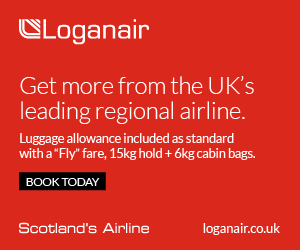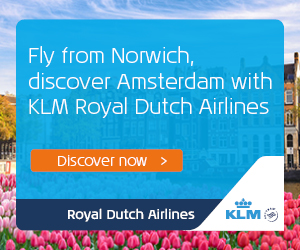24th November 2016
Drone safety targeted by new initiative
- Research shows support for enhanced drone safety education
- CAA launches new DroneSafe.uk website in partnership with UK air traffic control body NATS and revised Dronecode
- Research shows drones expected to be a top Christmas present – read the Dronecode to be safe
- 91% of the public agreed that adherence to rules and guidelines important
With one month to go to Christmas the Civil Aviation Authority (CAA) has today issued a revised Dronecode to help millions getting a drone this year to fly safely and responsibly. The Dronecode, a simple set of rules and guidelines established in legislation which outline how to fly drones safely and within the law in the UK, is hosted on a new dedicated Dronesafe.uk website. All backed by wide range of leading aviation players, drone retailers and manufacturers and the Department for Transport.
The launch of the new Dronecode, follows an industry-first report into user behaviour, attitudes towards, and responsible use of drones; findings led to the new website and the revised and updated Dronecode.
Key findings of the report are:
- The public agree that drones can be used for ‘worthy’ causes:
- 61% state that drones would be useful for traffic monitoring and power line inspection
- 58% agree that drones would be useful for agriculture
- 56% state that drones would be useful for emergency health services
- 40% say that drones would be useful for donor organ transport
- 62% of drone owners state that ‘fun’ is the main reason for having a drone
- 69% of owners thought retailers were responsible for drone safety education at point of sale. 36% were made aware of the Dronecode when buying a drone
To demonstrate the need for a unified approach, the research, which was carried out in collaboration with strategic insight agency Opinium, identified that 91% of the public agreed that adherence to the Dronecode is important. 39% of drone users had so far heard of it since its launch in 2015.
Drone owners and those looking to purchase one should familiarise themselves with the CAA’s revised Dronecode, a simple set of rules around safe and responsible use:
- Don’t fly near airports or airfields
- Remember to stay below 400ft (120m) and at least 150ft (50m) away from buildings and people
- Observe your drone at all times
- Never fly near aircraft
- Enjoy responsibly
Adherence to the Dronecode will address initial public concern identified in the research and help the wider industries that can harness the power of drones for good to grow. These are certainly front of mind with high expectations among the public for agriculture, medical and healthcare use.
Tim Johnson, Policy Director at the CAA said, “Consumer research on this scale into drone use has never been done before and there was a real need from the aviation and drone industries to find out more about this growing sector. The research shows that the public have understandable concerns about reported drone misuse to date, and demonstrate clearly why the current education programme is underway, backed by legal action when appropriate.
“Drones have significant potential and the new Dronecode, which forms the basis of establishing a responsible attitude toward drone flight amongst consumers, will help to protect the safety of the wider aviation industry. It will also help those expected to use drones to improve current operations, from farming to traffic, from healthcare to logistics. Ultimately, people must use their drones safely, and responsibly.”
The new Dronecode and the consumer research is available to download at www.dronesafe.uk, a new website created by the CAA and air traffic control body NATS, and supported by a range of key players in the drone and aviation industries and the Department for Transport.
Andrew Sage, at the air traffic control provider NATS, said: “Drones are an incredible, inspiring technology but it’s vital that people are using them safely. With the number of reported drone incidents on the rise, it’s important that people understand their legal obligations and fly safe, having fun whilst ensuring other users of the UK’s airspace aren’t put at risk. We hope that dronesafe.uk will help to achieve this.”
Oliver Meakin, CEO at Maplin added, “During the lead up to Christmas, a key time for drone purchases, we are working with the CAA and NATS to make sure that all of our drone buying customers are made aware of the new Dronecode and Drone Safe website, along with the importance of using their drone safely.”
The launch of the new Dronecode, report and Drone Safe website forms part of a wider initiative looking at establishing a safe and responsible attitude toward drone flight and usage to protect the safety of the wider aviation industry and the wider sector opportunities.
This initiative saw the launch of 400ft Britain last month, a drone photography and videography competition that aims to creatively bring the Dronecode to life, held in partnership with VisitEngland and offering drone-flying holidays from Phantom Flight School to the winning entries.
The new Dronecode is for consumer drone use and those using a drone commercially must be licensed and undergo an approved course. Drone users must also remember that if they don’t follow the simple rules they could be prosecuted and go to prison.
ENDS
About the CAA
The CAA is the UK’s aviation regulator. Its activities include: making sure that the aviation industry meets the highest technical and operational safety standards; preventing holidaymakers from being stranded abroad or losing money because of tour operator insolvency; planning and regulating all UK airspace; and regulating airports, air traffic services and airlines and providing advice on aviation policy.
About the Dronecode
The rules of the Dronecode are straightforward: don’t fly near airports; remember to keep your drone in sight (stay below 400ft); observe your drone at all times; never fly near aircraft; and enjoy responsibly. Neatly encapsulated in a DRONE mnemonic.
About NATS
NATS is a leading air navigation services specialist, handling 2.3 million flights in 2015, covering the UK and eastern North Atlantic. NATS provides air traffic control from centres at Swanwick, Hampshire and Prestwick, Ayrshire.
NATS also provides air traffic control services at 14 UK airports including Heathrow, Stansted, Manchester and Glasgow; at Gibraltar Airport and, in a joint venture with Ferrovial, at a number of airport towers in Spain.
Building on its reputation for operational excellence and innovation, NATS also offers aerodrome, data, engineering and consultancy solutions to customers worldwide, including airports, air traffic service providers and Governments. There is more information on the NATS website at www.nats.aero









